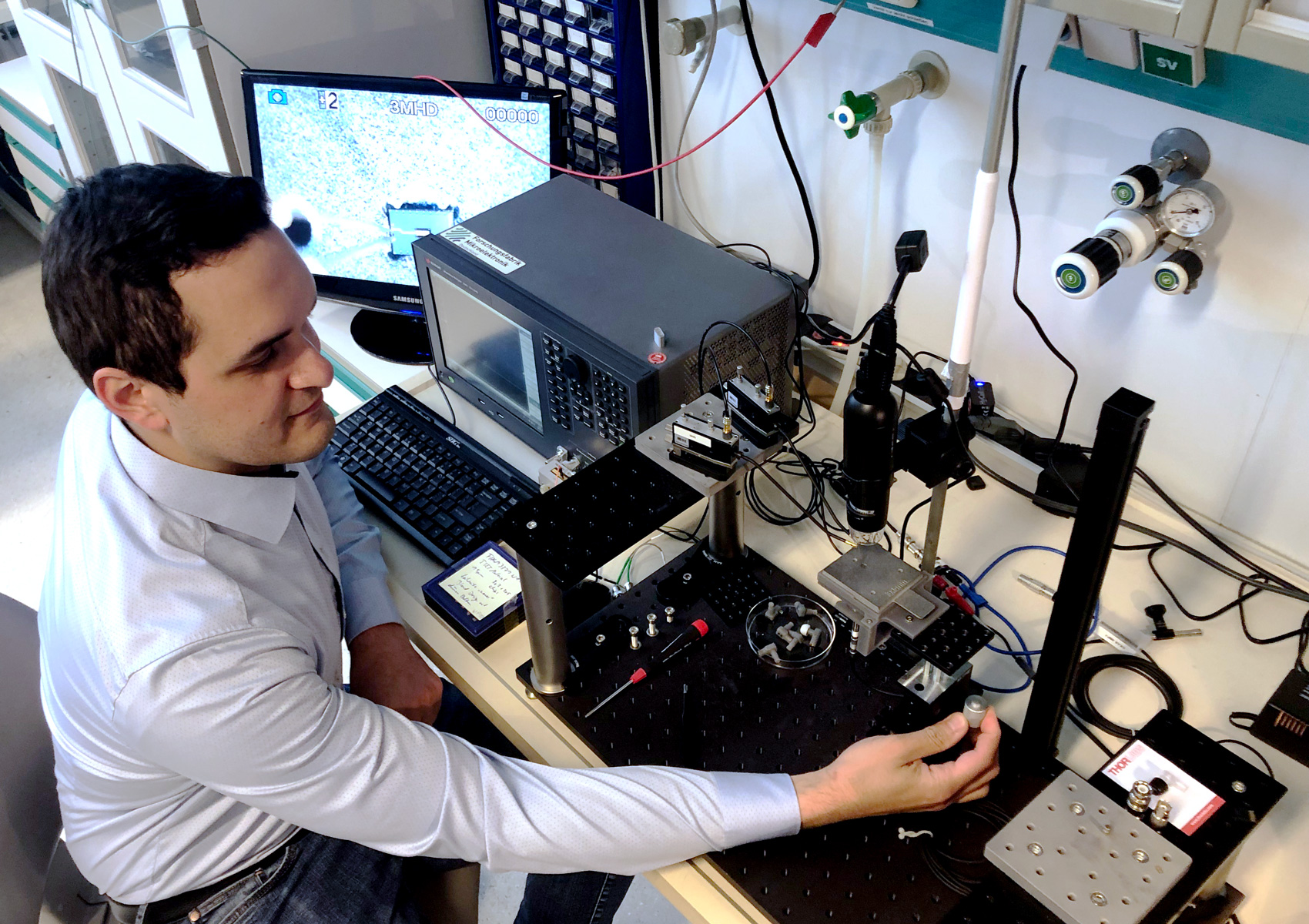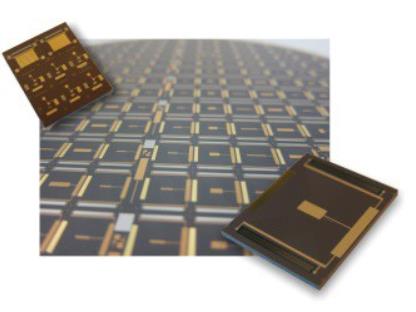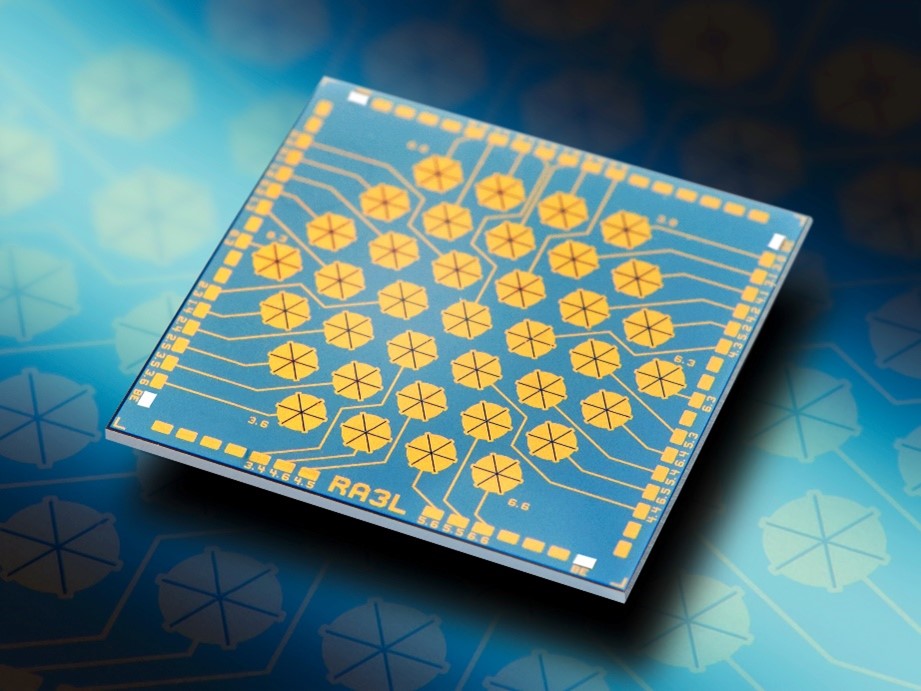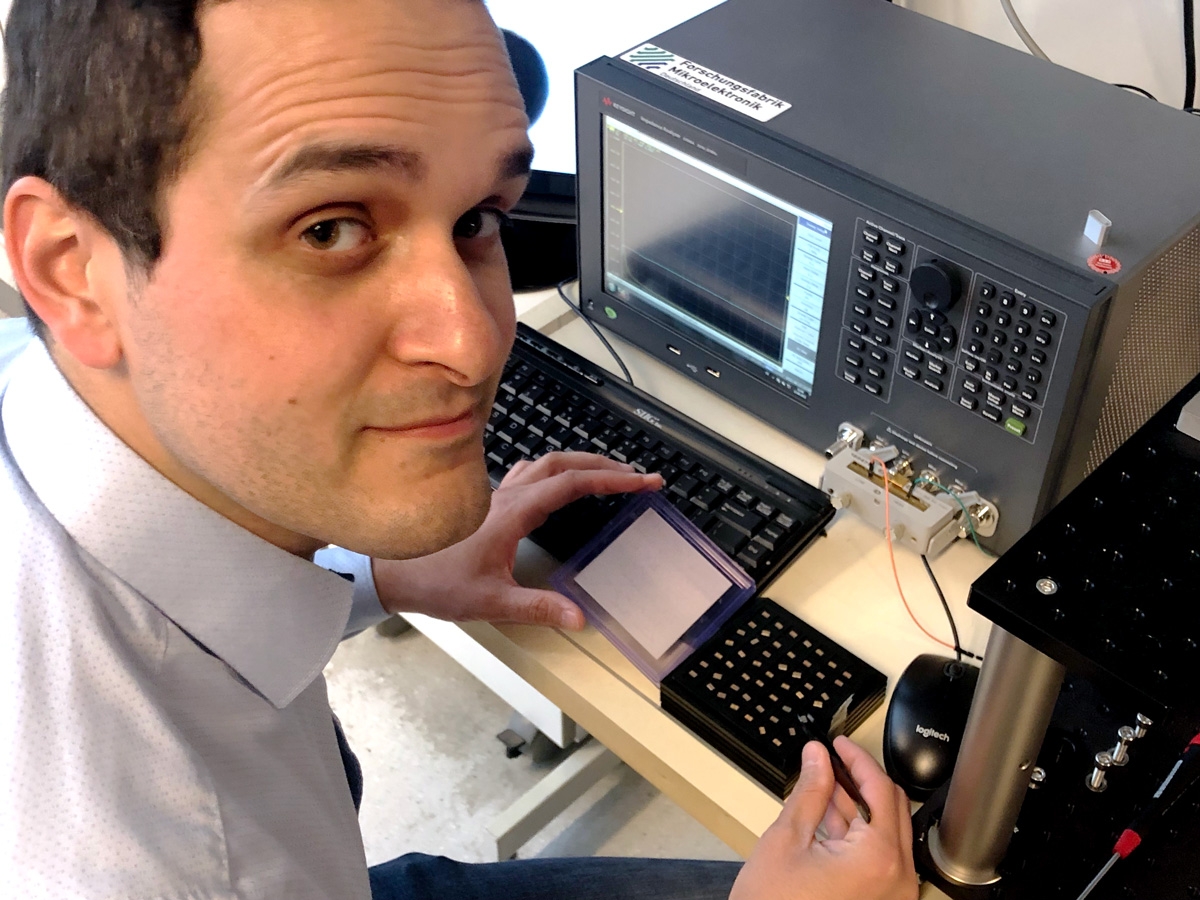Lenny Castellanos | Fraunhofer ISIT
MEMS ultrasonic transducers made by Fraunhofer for the production technology
Most people are familiar with ultrasound examinations from medicine. But ultrasound technology is also used in industry for a wide range of applications.
Industrial mass production places a very high value on automation and process control. This is the only way to ensure that the products are qualitatively suitable for sale. Moreover, it not only prevents potential hazards to the facility, but also saves production costs by producing fewer defective parts. In light of this, and in view of the Industrie 4.0 strategy, more sensitive, accurate and cost-effective sensors are an important building block in production technology. In addition, miniaturization is playing an increasing role due to its advantages in terms of portability, possible modularization of designs, networking and integrability. MEMS (MicroElectroMechanicalSystems) technology enables the realization of these goals and, at the same time, is able to cover industrial requirements due to the reliability of ultrasonic sensor technology.
Ultrasonic measuring principle
Ultrasound technology covers a wide and growing range of applications that find use in industry for monitoring and controlling processes. These are based on the principle of reflection and/or transmission of sound waves in a propagation environment. For example, if a sound wave is transmitted transversely across a flow channel, the flow velocity can be determined with high accuracy. Furthermore, for example, the position of an object in space can be detected by receiving a wave reflected from the object again. For this purpose, only the propagation time of the wave should be measured, i.e. the time in which the wave propagates between two positions in space. Transmission and propagation are also possible in different media such as water, air or even in metals. The transition between two media (e.g. from air to water), can lead to reflections. This regularity allows the unrestricted use of ultrasonic waves independent of light condition, color and transparency of obstacles, where e.g. optical sensors show weaknesses.
Application examples
In industry, ultrasonic devices are used to determine the level of water tanks, for example, by measuring the distance between the sensor and the water surface. Parking aids in cars also use ultrasound. They measure the distance between the sensor and possible obstacles such as curbs, pedestrians or vehicles. The concept of orientation by means of ultrasound echolocation is also used for other driving and flying objects, such as self-driving robots or autonomously flying drones.
The three different Fraunhofer institutes (ENAS, IPMS and ISIT) develop ultrasonic transducers for a wide range of applications that can generate high-frequency sound waves with a high sound pressure.
Construction / Function / USP
At the core of the Fraunhofer Alliance's ultrasonic sensor technology are MEMS transducers manufactured using semiconductor fabrication processes. The components, so-called micromechanical ultrasonic transducers (MUT for Micromachined Ultrasonic Transducer), consist of microscopic membrane-like structures fabricated on so-called silicon wafers. These transducers are driven either capacitively or piezoelectrically, so that when an alternating electrical voltage is applied, a mechanical force is generated that causes the transducers to vibrate. The devices thus generate high-frequency vibrations that locally and alternately compress the surrounding medium to produce sound waves. The stronger the oscillation, the more intense the ultrasonic wave. Highly efficient ultrasonic sensors can be realized with the powerful transducers developed in the Fraunhofer MUT Alliance.
A typical feature of MUTs is the use of resonance to generate even stronger vibration amplitudes. This occurs at a certain excitation frequency, which is mainly dependent on the geometry of the transducer and the material properties. However, the excitation frequency also affects the range of the sound wave, since at very high frequencies the sound is strongly absorbed by the medium, and the intensity decreases. With the MEMS-based sound exciters, the Fraunhofer Alliance can easily adapt the excitation frequency to the customer requirement and thus find an optimal design of the devices for the customers.
Due to the compact geometries and low weight of the MEMS transducers, the Fraunhofer-manufactured transducers are easy to assemble in various setups. In addition, they can be easily integrated with the necessary drive electronics thanks to established semiconductor manufacturing processes.
Development potential
The Fraunhofer ultrasonic transducers offer even more advantages for measuring instrument manufacturers. If different components are arranged close together to form an array, a whole range of new applications opens up. In this way, for example, the positions of objects can be reliably mapped in three-dimensional space by correlating the signals received with different propagation times with the position of each individual transducer (beam forming). On the other hand, it is also possible to direct the transmission of an ultrasonic wave so that it hits exactly one targeted point in space (Beam Steering).
 Fraunhofer Institute for Silicon Technology
Fraunhofer Institute for Silicon Technology


